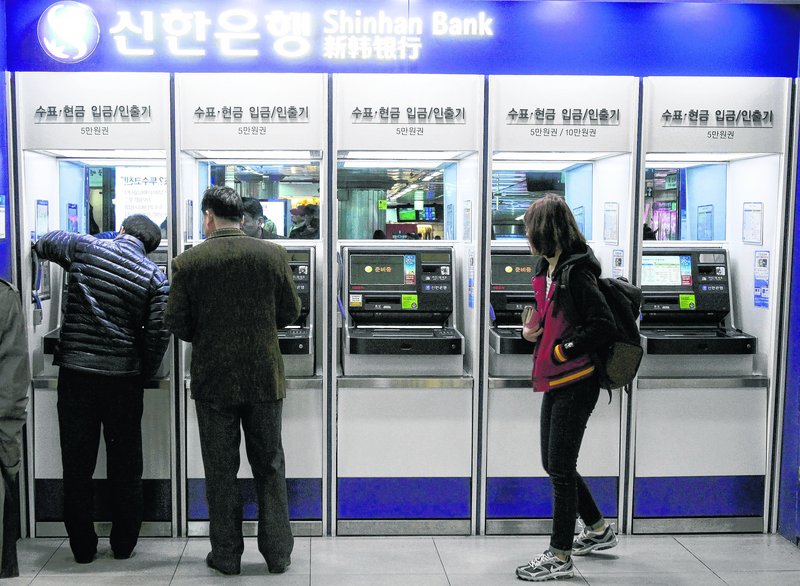SEOUL, South Korea – A cyberattack caused computer networks at major South Korean banks and top TV broadcasters to crash simultaneously Wednesday, paralyzing bank machines across the country and prompting speculation of North Korean involvement.
Screens went blank at 2 p.m., the state-run Korea Information Security Agency said, and more than seven hours later some systems were still down.
Police and South Korean officials couldn’t immediately determine responsibility and North Korea’s state media made no immediate comments on the shutdown. But some experts suspected a cyberattack orchestrated by Pyongyang. The rivals have exchanged threats amid joint U.S.-South Korean military drills and in the wake of U.N. sanctions meant to punish North Korea over its nuclear test last month.
The network paralysis took place just days after North Korea accused South Korea and the U.S. of staging a cyberattack that shut down its websites for two days last week. Loxley Pacific, the Thailand-based Internet service provider, confirmed the North Korean outage but did not say what caused it.
The South Korean shutdown did not affect government agencies or potential targets such as power plants or transportation systems, and there were no immediate reports that bank customers’ records were compromised, but the disruption froze part of the country’s commerce.
Some customers were unable to use the debit or credit cards that many rely on more than cash. At one Starbucks in downtown Seoul, customers were asked to pay for their coffee in cash, and lines formed outside disabled bank machines.
Shinhan Bank, a major South Korean lender, reported a two-hour system shutdown, including online banking and automated teller machines. It said networks later came back online and that banking was back to normal. Shinhan said no customer records or accounts were compromised.
Another big bank, Nonghyup, said its system eventually came back online. Officials didn’t answer a call seeking details on the safety of customer records. Jeju Bank said some of its branches also reported network shutdowns.
Broadcasters KBS and MBC said their computers went down at 2 p.m., but that the shutdown did not affect TV broadcasts. Computers were still down about seven hours after the shutdown began, according to the state-run Korea Communications Commission, South Korea’s telecom regulator.
The YTN cable news channel also said the company’s internal computer network was paralyzed. Footage showed workers staring at blank computer screens.
KBS employees said they watched helplessly as files stored on their computers began disappearing.
Last year, North Korea threatened to attack several news companies, including KBC and MBC, over their reports critical of children’s’ festivals in the North.
“It’s got to be a hacking attack,” said Lim Jong-in, dean of Korea University’s Graduate School of Information Security. “Such simultaneous shutdowns cannot be caused by technical glitches.”
The Korea Information Security Agency had reported that an image of skulls and a hacking claim had popped up on some of the computers that shut down, but later said those who reported the skulls did not work for the five companies whose computers suffered massive outages. KISA was investigating the skull images as well.
“If it plays out that this was a state-sponsored attack, that’s pretty bald faced and definitely an escalation in the tensions between the two countries,” said James Barnett, former chief of public safety and homeland security for the U.S. Federal Communications Commission.
An ominous question is what other businesses, in South Korea or elsewhere, may also be in the sights of the attacker, said Barnett, who heads the cybersecurity practice at Washington law firm Venable.
“This needs to be a wake-up call,” he said. “This can happen anywhere.”
Send questions/comments to the editors.



Success. Please wait for the page to reload. If the page does not reload within 5 seconds, please refresh the page.
Enter your email and password to access comments.
Hi, to comment on stories you must . This profile is in addition to your subscription and website login.
Already have a commenting profile? .
Invalid username/password.
Please check your email to confirm and complete your registration.
Only subscribers are eligible to post comments. Please subscribe or login first for digital access. Here’s why.
Use the form below to reset your password. When you've submitted your account email, we will send an email with a reset code.